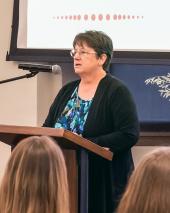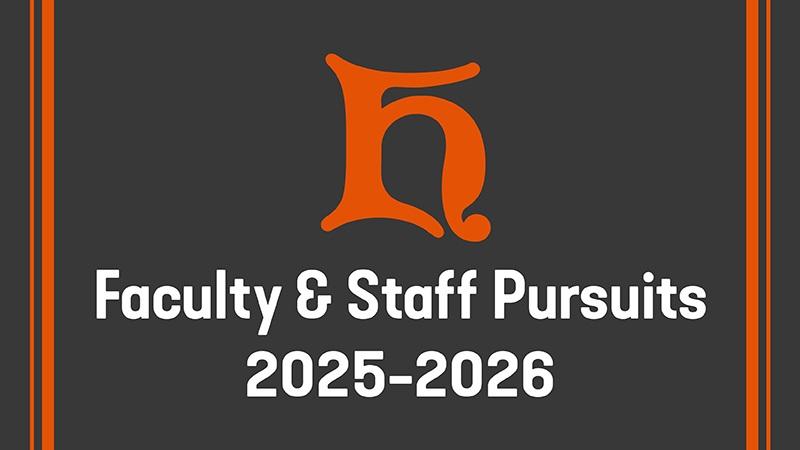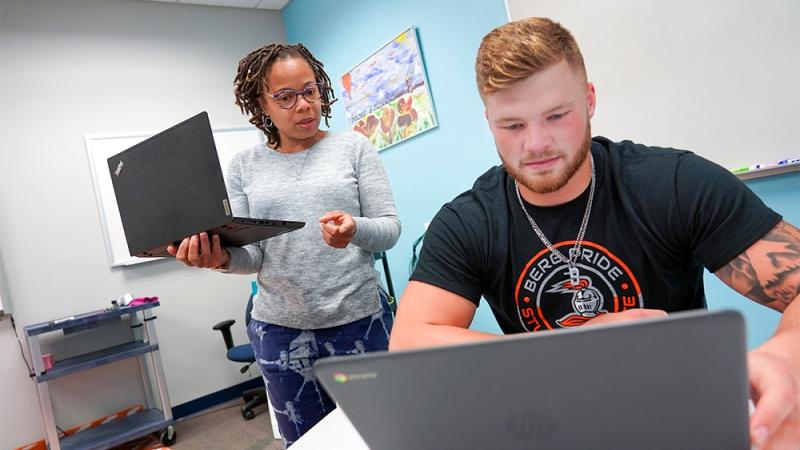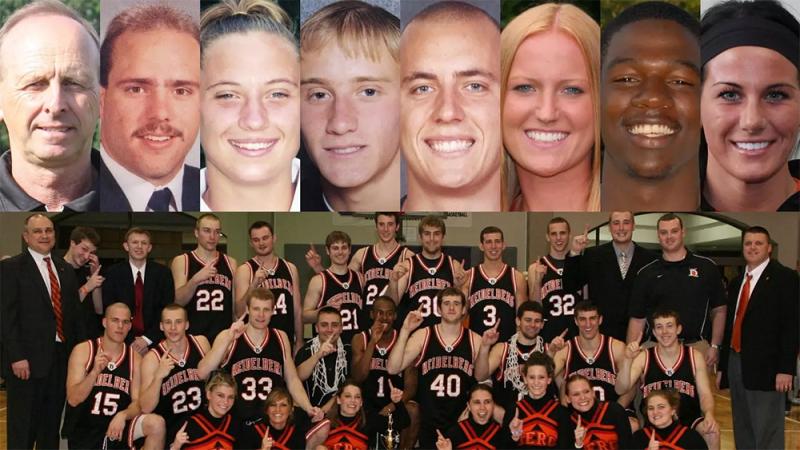Bio students honor the selfless sacrifice of body donors
Heidelberg’s Biology 403 class presented a beautiful ceremony honoring the selfless individuals who have donated their bodies to science through the Dr. George Barlow Body Donor Lab. This annual event recognizes the major impact of these donors, whose contributions not only advance medical education but also embody a spirit of generosity that continues to inspire students and faculty alike.
Through their selflessness, the body donors have given Heidelberg students a unique educational opportunity and a lifelong lesson in the value of life and the importance of service to humanity.
As attendees filled the chapel, gratitude filled the air. Students, faculty, and community members gathered to pay tribute to “the names and lives unknown to us,” reflecting on the lasting legacy of those who have chosen to give their bodies for the advancement of knowledge. The ceremony began with the lighting of candles, a symbolic gesture of remembrance and respect, followed by a prayer led by Rev. Karsten Snitker, setting a tone for the proceedings.

Biology Professor Dr. Pam Faber, a cornerstone of Heidelberg’s biology program who has been the guiding force to create and sustain the Body Donor Lab, reflected, “We are deeply indebted to the donors,” also noting the sacrifice of the donors’ families.
Students’ voices of gratitude
Students at Heidelberg recognize the immense responsibility that comes with working on donor bodies. Joel Rand, an Exercise Science major, remarked, “Our appreciation for the donors grows more every semester.”
Anthony Patellis shared his thoughts on the unique experience, stating, “The skills gained from working with donor bodies will give us an advantage in grad school.” He praised Dr. Faber for her dedication: “She’s tough at the moment, but she knows how to bring out the best in us.”
Grant McMaster ‘26 articulated the profound impact of the donors: “They have made the ultimate sacrifice by allowing themselves to be in our hands. We are honored to be trusted by the donors. It reminds us of the fragility of life and the responsibility we carry into our careers.”
Current students also connected with alumni to gain insights into their experiences. Among them, Noah Stahl and Brynlee Vermillion, both ‘24 and now pursuing medical studies at Lake Erie College of Osteopathic Medicine, explained how their time working with donor bodies boosted their confidence in graduate school. Noah said, “The experience prepared me mentally and physically… I was ahead of my peers.” Brynlee added that her extra time spent in the lab was “super rewarding” in her graduate studies.
The ceremony concluded with a video presentation showcasing students working in the lab this semester, a tribute to the enduring legacy of the donors.
A legacy of learning
Since 1988, Heidelberg has partnered with The Ohio State Department of Anatomy, enabling the university to provide invaluable learning experiences for its students. President Rob Huntington expressed his appreciation for OSU’s collaboration and support, noting that each year, Heidelberg receives a new donor and returns one to Ohio State. This year’s ceremony marked the 12th anniversary of the event, which originated in 2012 as a Senior Honors Project by Gabrielle Mintz.
The gift of donations
Body donors “took a leap of faith,” entrusting their bodies to the university with the hope that they would be used to educate future healthcare professionals. This act of generosity not only allows students to learn important anatomical structures but also provides them with the opportunity to make mistakes, learn from them, and grow in their understanding. In total, 24 men and women have “joined us on campus to educate our students and prepare them for their future careers in health care.” President Huntington noted, “The opportunity to study donor bodies is something distinctive, quite dynamic, and very special at Heidelberg.”
Decades of dedication
The success of Heidelberg’s Body Donation Program is also attributed to generous benefactors. The late Dr. Barlow, who hired Pam Faber when he retired from Heidelberg, along with his wife Marilyn, were early supporters of the lab. Dr. Jim Getz ’58 connected the university with the Webster Industries Foundation, ensuring funding that endures today. Dr. Chris Longaker ’64 established the Longaker Animal Lab in memory of his father and continues to support the sciences at Heidelberg. Significant support has also come from HU Trustee Dr. Susan Wolf ’71, who established the The Dr. Susan C. Wolf Anatomical Study Endowment in memory of her favorite professor, Dr. Barlow. The endowment has been instrumental in expanding the Anatomy & Physiology curriculum as well as the Body Donor Lab.
The contributions from donors extend beyond just bodies; they have provided essential funding for tools and equipment, enhancing the learning environment for students. “We are so appreciative and grateful to our benefactors and funders,” President Huntington said.
A tribute to Dr. Faber
As Professor Faber prepares to retire at the end of this academic year, she reflected on her nearly three decades teaching biology at Heidelberg, especially her work with students in the Body Donor Lab. “Have I done everything I can to help students retain the humanity of the donors and understand the gift that has been given to us?” she asked. “I do hope that I have.”
Dr. Faber’s dedication to her students was clear. As a Heidelberg Opportunity Maker, holds her students to high standards while nurturing their potential. “She cares about all of her students. She loves you,” said President Huntington, emphasizing her lasting influence on the university community.
ーby Kaidan Mathias ’25




